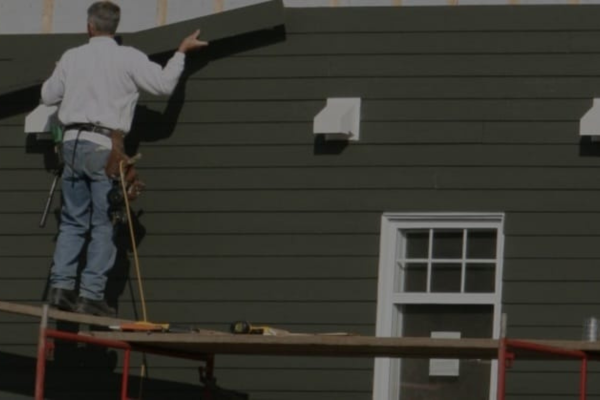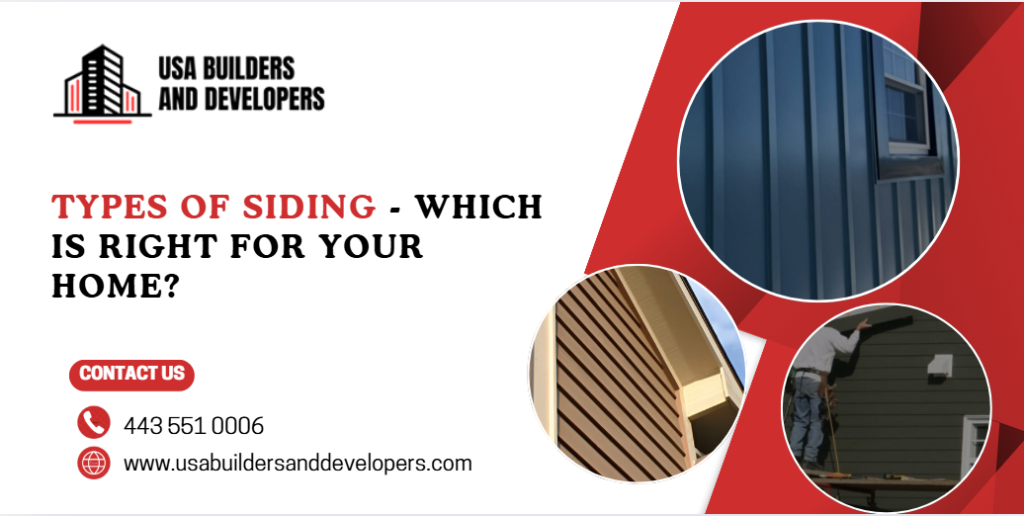Types of Siding play an important role in protecting your home and improving how it looks. Siding covers the outside walls of a house and shields it from rain, wind, heat, cold, and other weather conditions. At the same time, siding adds style and helps increase property value. With many new materials available today, choosing the right siding has become an important decision for every homeowner.
The best siding for your home depends on several factors. These include your local climate, budget, maintenance expectations, and the overall design of your house. This guide explains the most common siding options in simple terms, so you can understand the benefits and drawbacks of each type and make a confident choice.
Why Siding Matters for Your Home
Siding is your home’s first line of defense. It protects against rain, wind, snow, heat, and pests. Good siding also helps regulate indoor temperature and reduces energy loss. From a design standpoint, siding defines the architectural style of your home.
Professional contractors like USA Builders and Developers often emphasize that the right siding choice can reduce repair costs and improve durability for decades. That is why understanding your options is essential before starting any exterior renovation.
Key Factors to Consider Before Choosing Siding
Before exploring the different types of siding, consider these important factors:
- Climate and weather conditions
- Budget and installation costs
- Maintenance requirements
- Energy efficiency
- Durability and lifespan
- Style and color options
Balancing these factors will help you narrow down the siding that best fits your home and lifestyle.


Vinyl Siding
Vinyl siding remains one of the most commonly installed siding materials in residential construction. Vinyl is manufactured from PVC and designed to resist moisture and pests. Advances in technology have improved thickness, color retention, and insulation options.
Advantages
- Cost-effective installation
- Minimal maintenance requirements
- Moisture and insect resistant
- Wide selection of colors and profiles
Limitations
- Can become brittle in extreme cold
- Lower impact resistance than premium materials
- May fade after long exposure to UV rays
Vinyl siding is best suited for homeowners seeking a budget-friendly, low-maintenance exterior solution.
Fiber Cement Siding
Fiber cement siding is widely regarded as one of the most durable siding materials available today. It is composed of cement, sand, and cellulose fibers, creating a product that withstands harsh weather and heavy wear.
Advantages
- Exceptional durability
- Fire-resistant and non-combustible
- Resistant to rot, insects, and moisture
- Mimics wood, brick, and stone textures
Limitations
- Higher installation cost
- Requires professional handling and tools
- Heavier material
Fiber cement siding is ideal for homeowners prioritizing longevity, safety, and architectural flexibility.
Wood Siding
Wood siding offers a traditional and natural appearance that remains highly desirable in residential design. Common wood options include cedar, redwood, and pine.
Advantages
- Authentic and timeless aesthetic
- Renewable and biodegradable material
- Easy to customize with stains or paint
Limitations
- Requires frequent maintenance
- Vulnerable to moisture, insects, and rot
- Higher lifetime maintenance costs
Wood siding works best for homeowners willing to invest time and resources into ongoing upkeep.
Engineered Wood Siding
Engineered wood siding is designed to replicate the look of natural wood while improving performance. It is manufactured using wood strands bonded with resins for increased stability.
Advantages
- More affordable than natural wood
- Improved resistance to moisture and pests
- Easier installation
Limitations
- Shorter lifespan than fiber cement
- Still requires periodic maintenance
This option offers a balance between appearance and practicality.
Metal Siding
Metal siding, typically aluminum or steel, has become increasingly popular in contemporary and industrial home designs.
Advantages
- High durability and strength
- Fire-resistant material
- Low maintenance
- Recyclable and eco-friendly
Limitations
- Susceptible to dents
- Higher initial cost
- Limited traditional design appeal
Metal siding performs exceptionally well in extreme climates and modern architectural styles.
Brick Siding
Brick siding is one of the most durable and long-lasting exterior materials available.
Advantages
- Extremely long lifespan
- Minimal maintenance
- Excellent thermal performance
- Timeless appearance
Limitations
- High installation cost
- Requires strong structural support
- Limited design modifications
Brick siding is often chosen for homeowners seeking permanence and long-term value.
Stone Veneer Siding
Stone veneer siding delivers the elegance of natural stone with reduced cost and weight.
Advantages
- High-end visual appeal
- Lighter than full stone
- Versatile design applications
Limitations
- Installation quality is critical
- Less impact-resistant than solid stone
Stone veneer is commonly used for accents or feature walls.
Stucco Siding
Stucco siding is a cement-based exterior finish commonly found in warmer regions.
Advantages
- Seamless and clean appearance
- Fire-resistant
- Good insulation properties
Limitations
- Sensitive to moisture intrusion
- Requires skilled application
- Repairs can be complex
Stucco is most effective in dry or moderate climates.
Comparison Table: Types of Siding
| Types of Siding | Durability | Maintenance Level | Cost Range | Best Application |
|---|---|---|---|---|
| Vinyl | Moderate | Low | Low | Budget-friendly homes |
| Fiber Cement | High | Low | Medium | Long-term durability |
| Wood | Moderate | High | Medium | Classic designs |
| Engineered Wood | Moderate | Medium | Medium | Wood-look exteriors |
| Metal | High | Low | Medium-High | Modern architecture |
| Brick | Very High | Very Low | High | Permanent structures |
| Stone Veneer | Moderate | Low | Medium-High | Accent features |
| Stucco | Moderate | Medium | Medium | Warm climates |
Professional Installation Matters
Regardless of material choice, professional installation is essential. Improper installation can lead to moisture intrusion, insulation failure, and reduced lifespan. Reputable contractors like USA Builders and Developers focus on correct fastening, moisture barriers, and ventilation systems to ensure siding performs as intended.
Final Thoughts
Selecting the right Types of Siding is a strategic investment in your home’s protection, efficiency, and appearance. Each siding option offers distinct advantages and limitations, making it essential to align material choice with climate conditions, budget expectations, and architectural goals.
A well-informed decision, combined with expert installation, ensures your siding will enhance your home’s performance and beauty for decades. When planned carefully, siding is not an expense, it is a long-term asset that adds value, comfort, and confidence to your home.
Need Help with Your Next Project? Call USA Builders Today!
We’re here to help—quick answers, friendly service, anytime you need!

